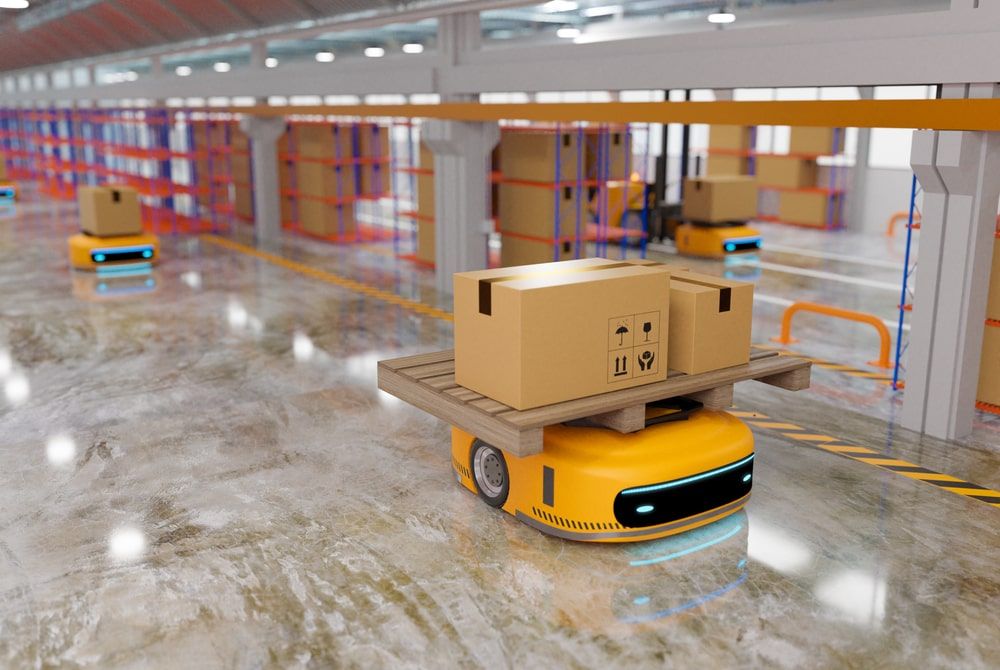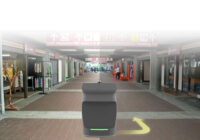Obstacle Avoidance is a robotic discipline that moves vehicles based on sensory data. When the scenario is dynamic with unpredictable behavior, using these methods in place of the traditional ways is a logical option. Using several stereo vision obstacle detection cameras or LiDAR to provide 360° situational awareness is being replaced by a new technology built on a special lens architecture.
Increased fidelity and redundancy for depth perception and object positioning are achieved by combining LiDAR obstacle avoidance with complementary technologies like stereo cameras. This necessitates more processing power.
What are Autonomous Mobile Robots?
Autonomous Mobile Robots (AMRs) navigate your warehouse using maps; however, they only include permanent or semi-permanent obstructions, including walls and shelves. A lot is happening in your warehouse every day that is not depicted on these maps, from pallets and boxes to workstations that periodically move and impediments like forklifts or humans moving. Your Autonomous Mobile Robots (AMRs) must be able to safely avoid all these hazards while also reliably detecting them.
We observe a shift toward more adaptable robotics solutions as more small and medium-sized businesses employ automation. Applications including item tracking, robotic bin selection, and product profiling need systems that can produce three-dimensional (3D) visual data.
Unrestrained by wired power, AMRs comprehend and navigate their environment using a complex array of sensors, artificial intelligence, machine learning, obstacle detection camera, and computing for path planning.
Autonomous Mobile Robots For Reliable And Safe Navigation By DreamVu
Two new 3D vision intelligence systems for autonomous systems are now available from DreamVu, the industry leader in omnidirectional 3D vision systems: PAL and PAL Mini. The largest stereoscopic field of view in the world is produced by both devices using novel, patented optics and cutting-edge imaging algorithms. Robot system designers can save a lot of time developing new robots because of the capacity of a single 3D camera to see enormous areas in a single frame. This capability also increases the run-time efficiency of the robot after it is deployed. High-resolution vision, high-accuracy depth and color 3D point clouds, easy integration with a range of autonomous systems, and exceptionally low power consumption are all features provided by PAL USB and PAL Mini.
One of the things that makes autonomous mobile robots so much more versatile and valuable than the previous generation of autonomous ground vehicles is their ability to avoid obstacles. You are assured your robots will be able to adapt robustly to your current warehouse environment by investing in the correct AMR. DreamVu’s obstacle detection cameras and solutions based on Obstacle Detection & Obstacle Avoidance – ODOA make it to the cut. You should carefully weigh your options for AMR and ensure that it has the hardware and software needed to navigate your warehouse consistently and safely.
Automated guided vehicles, remote teleoperated vehicles, and autonomous mobile robots benefit from 3D vision systems with a wide field of view to increase mobility. Visual simultaneous Localization (vSLAM) and mapping differentiate between static and moving obstacles to create the most accurate map possible. It assembles a complete 3D point cloud from each frame.
Obstacle detection cameras and vision intelligence software produce vision-based mobility solutions. They are inexpensive and easy to use by seeing obstacles, delivering extremely accurate depth information, and building exact maps. Passive 3D systems are based on stereo imaging employing two cameras to take two distinct pictures of the same scene from two different angles.
The Versatility of Omnidirectional 3D Obstacle Detection Cameras
All 3D vision product areas are impacted by the introduction of small, affordable industrial 3D cameras. Previously viewed as a future technology, it is now used in industries to increase productivity, decrease costs, optimize floor space, improve quality, and increase profitability. They are more reliable in situations where active sensors malfunction.
Greater Adaptability
Without the direct supervision of an operator, the obstacle detection camera dynamically assesses and adapts to its surroundings while carrying out various duties.
Excellent Image Quality
The stereo vision sensor’s inherent ability to derive a high-quality color image perfectly aligned with the depth map is a significant benefit. A neural network or another technique can process the color image to find objects and provide semantic information through semantic image segmentation. Thus, stereo vision sensors are a great option for robot mapping and navigation in many unstructured settings.
Easy to Implement
PAL and PAL Mini give unequaled performance utilizing just one CMOS sensor and no moving parts, unlike other stereo cameras. The visual intelligence offered by both products removes blind spots and combines full color footage with accurate depth mapping and detection in a single video stream. For navigation systems in warehouse robots, disinfection robots, commercial cleaning robots, and home vacuum cleaning robots where low-latency, low-power, and high-reliability are essential, the simple-to-use and implement cameras are suitable.
High-definition Imaging
Most current advances in 3D machine vision rely on passive scanning methods, typically an obstacle detection camera. However, due to complex scenes with heterogeneous objects having a wide range of reflection qualities and an overall wide dynamic range, photographs continue to be prone to degradation.
Numerous sectors are investigating new possible use cases as 3D sensing adoption rates increase. The target scene may have several components with either high- or low-reflectivity surfaces in some of the more complicated setups, creating a wide dynamic range.
Vision Intelligence Software By Dreamvu
Our vision intelligence software allows you to keep your robot off the clothesline. 2D LiDARs cannot detect obstacles above the LiDAR plane. With DreamVu’s 3D Obstacle Detection systems, you may identify impediments as high as necessary for your robot and its cargo, preventing hazards associated with an inability to detect these obstacles with Lidar obstacle avoidance.
Bottom Line
The 3D depth sensing technologies give mobile robots situational awareness and allow them to operate alongside people on challenging jobs. Although there are numerous alternative approaches, you most likely will not see them on a robot close to you. For most autonomous robotic systems, a combination of the aforementioned sensors will result in a robotic system that can move and carry out duties automatically, depending on the environment.
DreamVu is synonymous with innovation, dependability, and usability. Our obstacle detection camera, a leader in industrial 3D sensor technology, are an essential component of automation processes everywhere. We have been able to build a large range of 3D sensors by expanding into new areas and applications with our clients. Consequently, we have the appropriate solution for any application. We achieve mobility, low-cost, low-power visual intelligence with an unmatched field of view that is needed.







